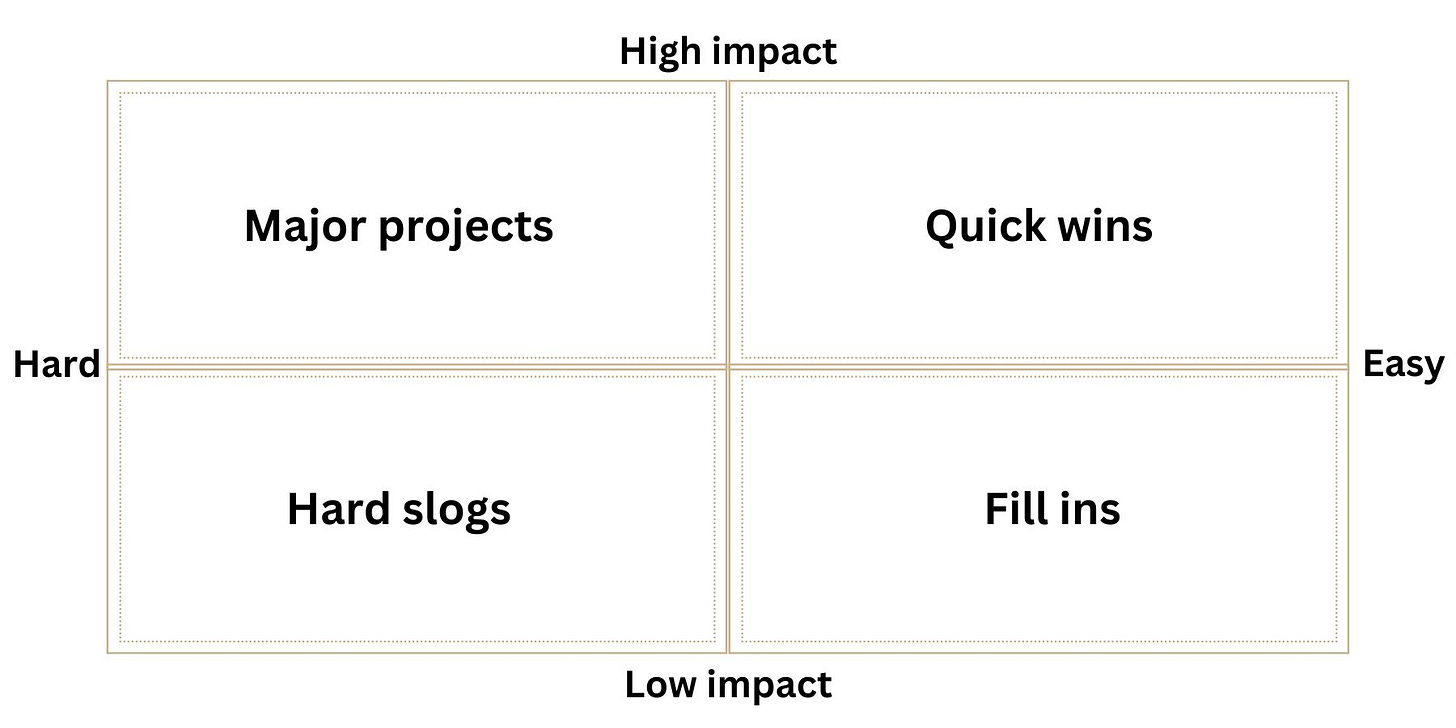If you fail to plan, you plan to fail.
Yes, it’s a cliche, but there’s truth in that turn of phrase. And a well-formed plan can make a project so much easier. Plus, if you’re collaborating with others, writing down your plan ensures that everyone knows what needs to happen and when — and can agree to it.
Writing a plan might seem intimidating, but a plan is nothing more than a list of steps written down. (When those steps need to happen over and over, you’ve got a workflow.) You can make plans in your head, but getting it out of there has a number of advantages. For one, you can see all the steps and edit them. Move them around. Add and subtract. You can also add deadlines or goals, and details about what needs to be done.
For someone who is a natural planner, this all seems somewhat obvious. But if you’re not used to making plans, especially for projects undertaken with others, here are some suggestions for where to begin.
Just write it down
A plan can be as simple as that. Look at your end goal and start writing down the steps that will get you there. Once you have all the steps, set them out in a logical order, thinking about what needs to happen before other steps, or what can only be done only if something else happens first. Then, if you’re working with others, figure out who should be involved in or responsible for each step. To figure out tentative deadlines for each step, you can work backwards from the date you need everything done by.
Glenn Carstens-Peters/Unsplash
Once this is written down, you can edit as much as you need to. And if there are multiple people involved, at this point you can gather everyone involved in the project and adjust steps and deadlines based on their feedback. Finally, everyone can agree to the final plan and execute it. Having that buy-in and agreement reduces the risk that a piece of the project will be missed or that someone will misunderstand their role or the goals.
Use an app
Using Google Docs, Word or even a piece of paper is a perfectly adequate place to keep your plan. I rebranded a website with nothing more than a two-page Google Doc to guide the team. But apps can also help. Just pick your favorite one — or the app your publication or organization is already using.
I’ve built plans in Asana, largely because my organization uses it already (though I will admit this app didn’t resonate with me). I keep the production plan for my magazine in Airtable. And I build my own plans in ToDoIst. Trello is another option, and there are plenty more.
Get a little help from AI
If you’re struggling with how to make a plan, ask ChatGPT to do it for you. AI can be scary good at making plans for you, though you’ll need to edit the output to tailor the plan to your needs. goblin.tools can also help you split up a goal into its parts, giving you a plan forward.
Did this help? If you’re not a planner, that’s OK. There are people who go through life without making plans and do just fine. But if you’ve got coworkers or teammates working on a project with you, give some thought to making a plan — they’ll thank you for it.
The Systematic Scribe is free. I have no current plans to have paid subscriptions — but if you like what you read and would like to support this work, you can Buy Me a Coffee.
An update on the Eisenhower matrix
Yesterday, courtesy of the amazing science journalist Mariette DiChristina (now dean of the College of Communication at Boston University), I got to experience a variation of the Eisenhower matrix in action — and I had to share.
Instead of using urgency and importance in your matrix, your variables are impact and ease. It gives you a matrix like this:
What I really like about this version of the matrix is that it helps you identify things that you can do now, those quick wins that will help you feel like you’re moving forward. And it helps you think through the bigger, harder things that may need more planning or work to accomplish.
Next time: Collecting your research
— Sarah
P.S. If you’ve got a question, comment or idea for a future newsletter, please email me at sciwriter.sarah@gmail.com. I’d love to hear from you. And if someone forwarded this to you (hint, hint), check out my first post and what you can expect from The Systematic Scribe.



